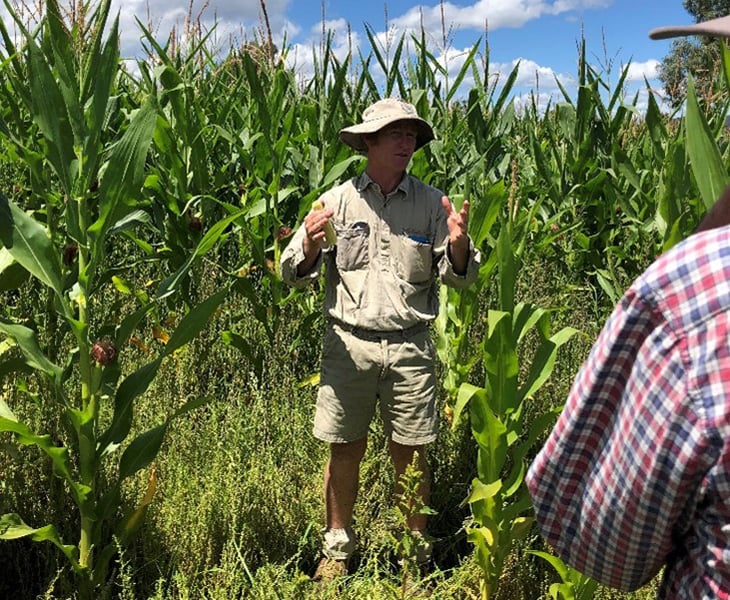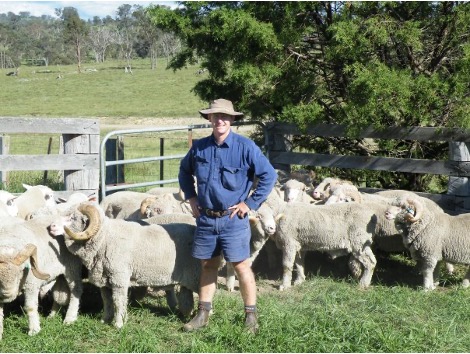Producer Profile - John Chappell
John & his wife Caroline operate a fine wool and beef cattle enterprise at Dundee on the NSW Northern Tablelands. In a normal year they aim to shear over 3,000 sheep in August with the goal of achieving 5kg / hd 16.8micron fleece. They currently average just over 4.5kg /hd at 16.8microns. Their sheep program is timed around a late September early October lambing with the lambs weaned in January. Their surplus sheep are sold in the February & March store sales and surplus ewes are sold in March and April.
John & Caroline conduct a beef breeding program with a self replacing herd of 400 Angus females. Joining in November for 9 weeks, the calves born in late July and August. Weaning occurs in May with the steers and surplus heifers sold as part of the Northern Tablelands annual weaner sales at a target weight of 270 – 280 kg.
Snapshot
- Name & Town: John Chappell
- Area managed: 1500 Ha
- Enterprise: Sheep (fine wool) and beef cattle
- Livestock Number: 3,000 ewes join 400 cows (angus)
- Pastures: Naturalised pastures; native; improved rye and clover
- Soil: Trap & Granite
- Rainfall: 800mm

John has used the AFM as part of his broader paddock management over summer and autumn of 2023. He described the role of the AFM as one of supporting his visual observations of paddock conditions. Particularly reenforcing his observation that biomass changes were occurring earlier and more broadly across his operation.
This certainty helped alter his approach to strategic supplementary feeding, and John bought the commencement of that feeding program forward one month as a result of his observations and use of the AFM. John intends to measure the impact this decision has on sheep liveweight and fleece production against previous years.
John describes his key lesson is to trust the observations he makes and use the AFM as a support tool. Initially he was worried he was hung up on the impact less desirable species such as African Lovegrass was having on the AFM results, by having a high biomass but low value feed across areas of his property.
However, he then reflected that the AFM could be used to confirm the areas which were dominated by Lovegrass and possibly require different grazing strategies as a result. His message was to use the AFM to shape observations with greater accuracy and therefore have more specific management options formed from there.
Summary

- More targeted timely feeding of key production livestock
- Don’t rely only on AFM but look at what’s also in the paddock and species
- Easy to access and to fit int the paddock management system
